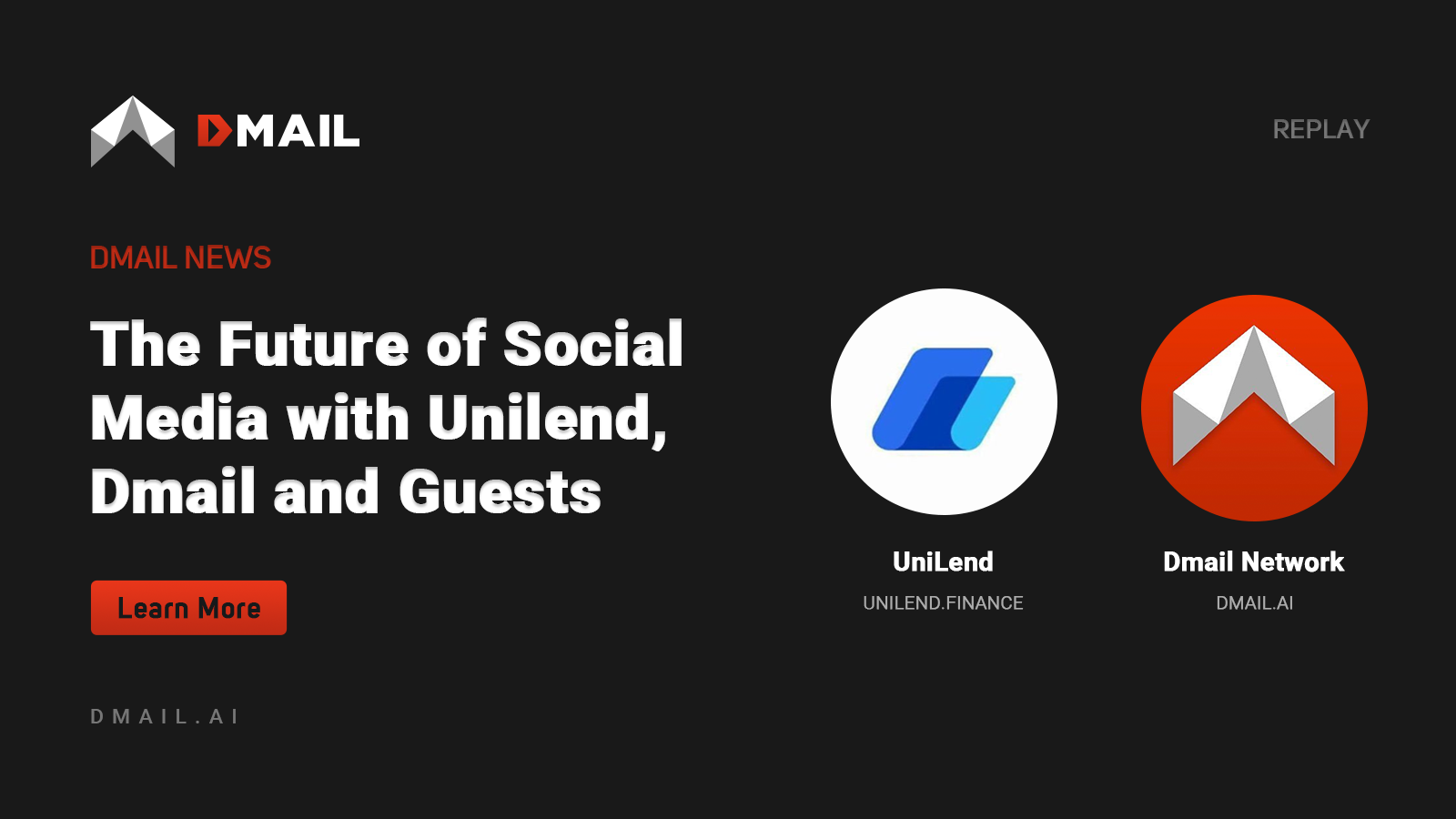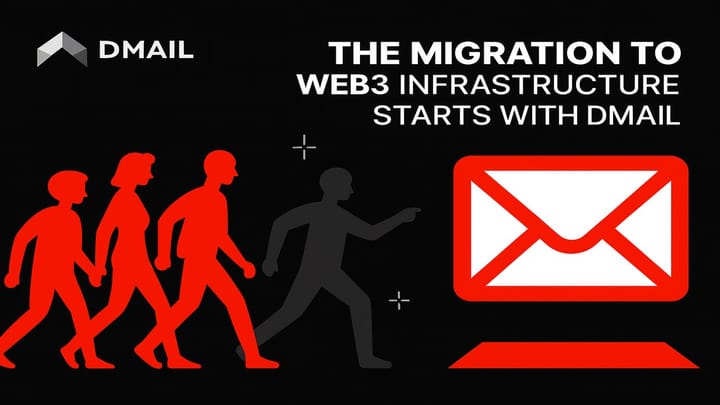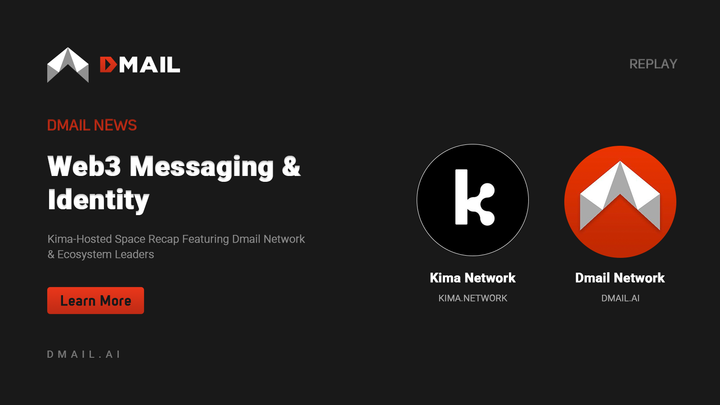SocialFi: The Future of Social Media with Unilend, Dmail and Guests
A recap of the recent Binance Square panel discussion on the future of SocialFi

Exclusive "Finding Alpha" series featuring experts from @Dmailofficial @Galxe @hiveblocks @InfiblueNFT on @binance LIVE🎙️
📣Agenda: SocialFi: Future of Social Media!
🗓️23rd October, 1 PM UTC
Panelists Questions
1. SocialFi is still an emerging sector within the Web3 ecosystem. How would you define SocialFi, and what key elements differentiate it from traditional social media platforms?
SocialFi, or "Social Finance," represents the intersection of social media and decentralized finance within Web3. Unlike traditional platforms where user data is monetized without compensation, SocialFi empowers users by giving them control over their data—data sovereignty. Through tokenization, users can earn rewards for their time, content, and engagement, creating a more equitable distribution of platform profits.
The key difference is that in SocialFi, users are both participants and stakeholders, benefiting directly from the value they create. This model fosters deeper community involvement and offers a more democratic approach to platform growth. At Dmail, we see SocialFi as a natural fit for our ecosystem, where users can earn rewards for engaging with our services, reinforcing the shift toward user empowerment and decentralization in Web3.
2. In what ways can SocialFi empower creators to gain more control over their content and monetization strategies? How can platforms balance the need for freedom of speech with effective content moderation?
SocialFi empowers creators by giving them ownership of their content and control over monetization through tokenization. On platforms like Dmail, creators can directly earn from their work without relying on intermediaries, ensuring fair compensation and control over how their content is used. This shifts the power back to creators, who can set their own terms and monetize through engagement.
Dmail powers creators by rewarding users for their communication and interaction on the platform, enabling the monetization of time and activity. This creates opportunities for users to earn based on their engagement, whether it's through completing tasks, participating in the ecosystem, or engaging with content in meaningful ways. By doing so, Dmail not only empowers creators but also fosters a more active and incentivized community.
3. Tokenization is often regarded as a transformative approach for content monetization. What role does tokenization play in continually incentivizing user engagement and content creation within SocialFi environments?
Dmail’s Mail to Earn system rewards users for completing platform activities, enabling them to earn partner airdrops and Dmail rewards. This system incentivizes users to actively participate on the platform, making their time and activity more valuable.
In the Marketing Hub, tokenization is used to drive higher opening rates for subscribed marketing mail. By rewarding users for engaging with marketing content, the Marketing Hub aligns incentives, ensuring that users are more likely to interact with promotional emails. This boosts engagement for brands while allowing users to earn tokens for their activity, creating a more dynamic and mutually beneficial ecosystem.
4. As SocialFi approaches mainstream adoption, what critical features or innovations do you believe are necessary for these platforms to effectively compete with or complement existing social media giants like Instagram, Facebook and Youtube?
For SocialFi to compete with giants like Instagram and Facebook, two key innovations are crucial:
- Data Ownership: SocialFi platforms empower users to control and own their data, addressing privacy concerns and shifting power from corporations to individuals.
- Tokenized Economy: By introducing a tokenized distributed economy, SocialFi allows users to earn tokens for their content and engagement, ensuring a fairer distribution of value within the community.
Additionally, decentralized governance gives users a voice in platform decisions, and interoperability enhances cross-platform engagement. These features provide a more user-centric and rewarding experience than traditional social media.
5. With the growing integration of AI in various Web3 applications, how do you foresee AI enhancing user experience, content discovery, and community engagement within SocialFi platforms?
The integration of AI in SocialFi platforms has immense potential to enhance user experience, content discovery, and community engagement. AI can personalize content based on user preferences, ensuring more relevant and engaging interactions, while also improving the efficiency of community management.
At Dmail, AI will be instrumental in user segmentation and profiling, allowing for highly tailored content delivery and more effective marketing efforts. Additionally, Dmail's AI assistant will act as a powerful productivity tool, helping users with tasks like scheduling, sending crypto assets to other wallets, writing emails, and organizing their day. This AI-driven assistance will free up time for users to focus on more creative and strategic endeavors, making the platform both efficient and engaging. By incorporating AI in these ways, SocialFi platforms can offer a more dynamic, user-centric experience, driving long-term participation and value.
6. Looking ahead 5-10 years, how do you envision the evolution of SocialFi?
Looking ahead 5–10 years, SocialFi has the potential to transform the social media landscape entirely. As platforms like Dmail continue to grow—aiming to scale from 18 million to over a billion users—the core value proposition of data ownership and monetization of user time will become increasingly compelling.
As Web3 technology matures, we foresee SocialFi platforms replicating the UI and UX of traditional Web2 social platforms, but with the added benefit of data sovereignty and the ability for users to monetize their time and engagement. Once users realize they can enjoy the same seamless experience they’re used to, but with more control and rewards, the shift to Web3 will be inevitable. This will empower users in ways that Web2 platforms never could, making SocialFi the dominant paradigm in online engagement.

Connect with Dmail: Website | Twitter | Discord | Github | Telegram





Comments ()